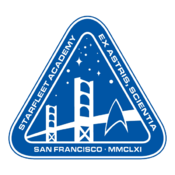Warp Highways: Difference between revisions
Pietmaximoff (talk | contribs) mNo edit summary |
(missing sidebar.) |
||
| Line 1: | Line 1: | ||
{{Academy-Misc}} | |||
There are occasions when a Starship can travel at speeds significantly higher than normal. These high speeds are allowed by so called "warp highways" named after an ancient earth transportation system. These can consist of broad areas encompassing a number of whole star systems, or narrow corridors which can extend for many thousands of light years. | There are occasions when a Starship can travel at speeds significantly higher than normal. These high speeds are allowed by so called "warp highways" named after an ancient earth transportation system. These can consist of broad areas encompassing a number of whole star systems, or narrow corridors which can extend for many thousands of light years. | ||
Latest revision as of 09:16, 21 January 2020
| Academy Library |
|---|
There are occasions when a Starship can travel at speeds significantly higher than normal. These high speeds are allowed by so called "warp highways" named after an ancient earth transportation system. These can consist of broad areas encompassing a number of whole star systems, or narrow corridors which can extend for many thousands of light years. The effect of a warp highway is to change the speed associated with any given warp factor according a multiplier known as Cochranes Value, which is highly variable from region to region. These phenomena are known to exist for a finite period of time. Amongst their other properties, highways are notoriously difficult to detect and map - Starfleet has always put considerable effort into locating these regions, carrying out many mapping missions. Since their discovery, the warp highways have been a crucial factor in the expansion of the Federation and other powers. They allow the journey time across known space to be cut from years or even decades down to a matter of days. This information is courtesy of the Daystrom Institute Technical Library and copyright Graham Kennedy. |

